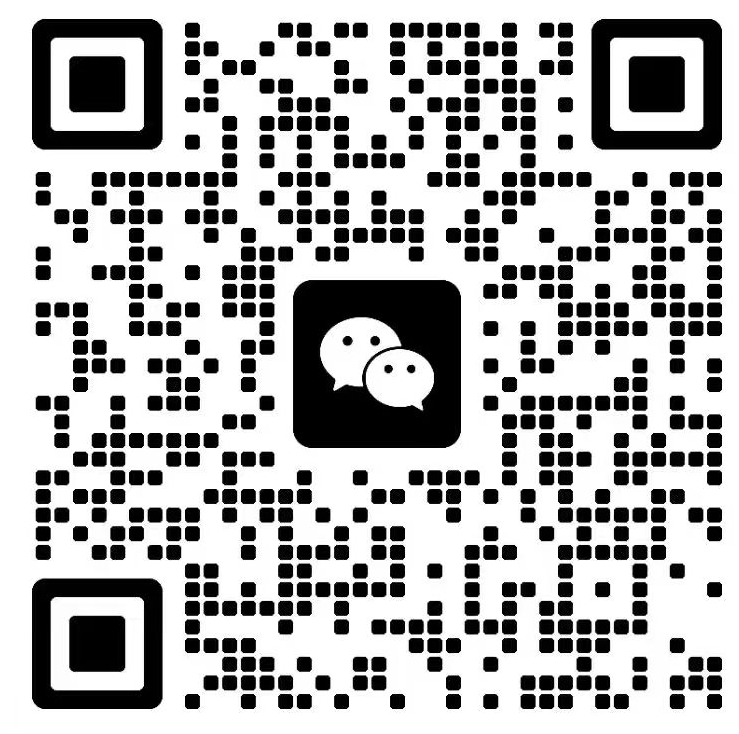考试大纲不仅能给你一个复习的方向,还能帮助你梳理整个知识脉络,方便记忆。今天,小编为大家整理了
“2023考研大纲:渤海大学843综合英语(II)2023年硕士研究生入学考试自命题科目考试大纲”的相关内容,希望对大家有所帮助!
一、考查目标
攻读外国语言学及应用语言学专业学位入学考试综合英语(II)科目考试内容包括英语课程与教学论、语言学导论两门专业课程,要求考生系统掌握相关学科的基本知识、基础理论和基本方法,并能运用相关理论和方法分析、解决实际问题。
二、考试形式与试卷结构
(一)试卷成绩及考试时间
本试卷满分为150分,考试时间为180分钟。
(二)答题方式
答题方式为闭卷、笔试。
(三)试卷内容结构
各部分内容所占分值为:
1.《英语课程与教学论》占比总分的50%左右;
2.《语言学导论》占比总分的50%左右。
(四)试卷题型结构
英语课程与教学论部分:名词解释题、简答题、论述题等。
语言学导论部分:判断题、单项选择题、名词解释题、简答题等。
三、考查范围
英语课程与教学论
考查目标
1.全面掌握英语教育领域的基本知识和基本理论,重点理解交际语言教学和任务型语言教学的意义。
2.熟练掌握英语语音、语法、词汇、听、说、读、写技能的教学方法,掌握教案设计的基本原则和撰写教案的方法,掌握英语教学评价的方法和技巧。
3.正确理解课堂教学管理的含义,熟练掌握基本的课堂管理方法和技巧。
考查内容
(注:以“*”表示命题热度,分三个等级,“*”越多表示往年命题热度越高)
Unit 1 Language and Language Learning
1.2 Views on language*
1.3 Views on language learning and learning in general**
Unit 2 Communicative Principles and Task-based Language Teaching
2.1 Language use in real life vs. traditional pedagogy
2.2 What is communicative competence?**
2.3 Implications for teaching and learning
2.4 Principles of Communicative Language Teaching (CLT)***
2.5 CLT and the teaching of language skills
2.6 Main features of communicative activities*
2.7 Task-based Language Teaching (TBLT)**
2.8 PPP and Task-based Language Teaching***
2.9 How to design tasks?
2.10 Appropriateness of CLT and TBLT in the Chinese context
Unit 4 Lesson Planning
4.1 Why is lesson planning important?
4.2 Principles for good lesson planning**
4.3 Macro planning vs.micro planning
4.4 Components of a lesson plan*
Unit 5 Classroom Management
5.1 The role of the teacher**
5.2 Classroom instructions*
5.3 Student grouping**
5.4 Discipline in the language classroom*
5.5 Questioning in the classroom***
5.6 Dealing with errors**
Unit 6 Teaching Pronunciation
6.1 The role of pronunciation*
6.2 The goal of teaching pronunciation**
6.3 Aspects of pronunciation
6.4 Practising sounds***
6.5 Practising stress and intonation**
Unit 7 Teaching Grammar
7.1 The role of grammar in language learning*
7.2 Grammar presentation***
7.3 Grammar practice**
Unit 8 Teaching Vocabulary
8.1 Understanding vocabulary and vocabulary learning
8.2 What does knowing a word involve?**
8.3 Ways of presenting vocabulary**
8.4 Ways of consolidating vocabulary*
8.5 Developing vocabulary learning strategies***
Unit 9 Teaching listening
9.1 Why does listening seem so difficult?**
9.3 Characteristics of the listening process*
9.4 Principles and models for teaching listening***
9.5 Pre-listening activities*
9.6 While-listening activities*
9.7 Post-listening activities*
Unit 10 Teaching Speaking
10.1 Differences between spoken and written language*
10.2 Principles for teaching speaking***
10.3 Designing speaking tasks**
10.4 Types of speaking tasks*
10.5 Organising speaking tasks
Unit 11 Teaching Reading
11.4 Strategies involved in reading comprehension*
11.5 The role of vocabulary in reading*
11.6 Principles and models for teaching reading***
11.7 Pre-reading activities*
11.8 While-reading activities**
11.9 Post-reading activities*
Unit 12 Teaching Writing
12.2 A communicative approach to writing**
12.3 Problems in writing tasks
12.4 A process approach to writing***
12.5 Motivating students to write**
12.6 Designing writing tasks
12.7 Using the Internet to promote process writing*
Unit 13 Integrated Skills
13.1 Why should we integrate the four skills?*
13.2 How can we integrate the four skills?*
13.3 What are the implications for teaching?
13.4 What are the limitations of integrating the four skills?
Unit 14 Moral Learning
14.1 Moral learning and English
14.2 Activities for moral learning*
14.3 The roles of the teacher*
14.4 The roles of the school
Unit 15 Assessment in Language Teaching
15.1 Understanding assessment*
15.2 Assessment purposes*
15.3 Methods for assessment**
15.4 Criteria for assessment***
15.5 Assessment principles*
15.6 Tests in assessment*
Unit 16 Learner Differences and Learner Training
16.1 Understanding learner differences*
16.2 Learner training in language teaching*
Unit 17 Using and Creating Resources
17.1 What resources are available for teaching?*
17.2 Exploring hidden resources*
Unit 18 Evaluating and Adapting Textbooks
18.3 Evaluating textbooks*
18.4 Selecting textbooks
18.5 Adapting textbooks
语言学导论
考查目标
1. 系统掌握语言学的基础知识、基本理论和语言学研究的基本方法。
2. 能初步运用语言学的基础知识、基本理论和基本方法分析和判断与语言相关的理论问题和实际问题。
考查内容
(注:以“*”表示命题热度,分三个等级,“*”越多表示往年命题热度越高)
Chapter 1 Invitations to Linguistics
1.1 Why Study Language?
1.2 What Is Language? ***
1.3 Design Features of Language***
1.3.1 Arbitrariness
1.3.2 Duality
1.3.3 Creativity
1.3.4 Displacement
1.4 Origin of Language
1.5 Functions of Language*
1.5.1 Informative
1.5.2 Interpersonal Function
1.5.3 Performative Function
1.5.4 Emotive Function
1.5.5 Phatic Communion
1.5.6 Recreational Function
1.5.7 Metalingual Function
1.6 What Is Linguistics?
1.7 Main Branches of Linguistics**
1.7.1 Phonetics
1.7.2 Phonology .
1.7. 3 Morphology
1.7.4 Syntax
1.7.5 Semantics
1. 7.6 Pragmatics
1.8 Macrolinguistics
1.8.3 Anthropological Linguistics
1.8.4 Computational Linguistics
1.9 Important Distinctions in Linguistics ***
1.9.1 Descriptive vs. Prescriptive
1.9.2 Synchronic vs. Diachronic
1.9.3 Langue and Parole
1.9.4 Competence and Performance
Chapter 2 Speech Sounds
2.1 Speech Production and Phonetic Transcription
2.1.1 Speech Production *
2.1.2 Phonetic Transcription - The IPA
2.2 Consonants and Vowels***
2.2.1 Consonants
2.2.2 Vowels
2.2.3 The Sounds of English***
2.3 Phonological Analysis***
2.3.1 Phonemes
2.3.2 Allophone
2.3.3 Phonological Rules
2.3.4 Rule Ordering
2.4 Suprasegmentals
2.4.1 Syllable**
2.4.2 Sonority Scale
2.4.3 Stress
2.4.4 Intonation and Tone
Chapter 3 Words and Morphology***
3.1 The Nature of Words
3.1.1 What is a Word?
3.1.2 Content Words and Function Words
3.2 Types of Morphemes
3.3 Morphological Processes
3.3.1 Derivation
3.3.2 Compounding
3.3.3 Inflection
3.3.4 Minor Morphological Processes
Chapter 4 From Word to Text
4.1 Syntactic Relations*
4.1.1 Positional Relation
4.1.2 Relation of Substitutability
4.1.3 Relation of Co-occurrence
4.2 Grammatical Construction and Its Constituents**
4.2.1 Grammatical Construction
4.2.2 Immediate Constituents
4.2.3 Endocentric and Exocentric Constructions
4.2.4 Coordination and Subordination
4.3 Syntactic Function*
4.3.1 Subject
4.3.2 Predicate
4.3.3 Object
4.3.4 The Relation between Classes and Functions
4.4 Category**
4.4.1 Number
4.4.2 Gender
4.4.3 Case
4.4.4 Agreement
4.5 Phrase, Clause and Sentence
4.5.1 Phrase
4.5.2 Clause
4.5.3 Sentence
4.6 Recursiveness
4.6.1 Conjoining
4.6.2 Embedding
4.7 Beyond the Sentence
4.7.1 Sentential Connection
4.7.2 Cohesion
4.7.3 Coherence
Chapter 5 Meaning
5.1 Meanings of “MEANING"
5.2 The Referential Theory*
5.3 Sense Relations***
5.3.1 Synonymy
5.3.2 Antonymy
5.3.3 Hyponymy
5.4 Componential Analysis*
Chapter 8 Language in Use
8.1 Speech Act Theory
8.1.1 Perfomatives and Constatives
8.1.2 The Theory of the Illocutionary Act **
8.2 The Theory of Conversational Implicature***
8.2.1 The Cooperative Principle
8.2.2 Violation of the Maxims
8.2.3 Characteristics of Implicature
原文标题:2023年渤海大学硕士研究生招生拟招生专业信息(持续更新)
原文链接:https://yjszsxxw.bhu.edu.cn/engine2/general/4154015/detail?engineInstanceId=656393&typeId=2984613&pageId=85721&websiteId=63018¤tBranch=0
以上就是小编整理
“2023考研大纲:渤海大学843综合英语(II)2023年硕士研究生入学考试自命题科目考试大纲”的全部内容,想了解更多考研
复试大纲信息,请持续关注本网站!


